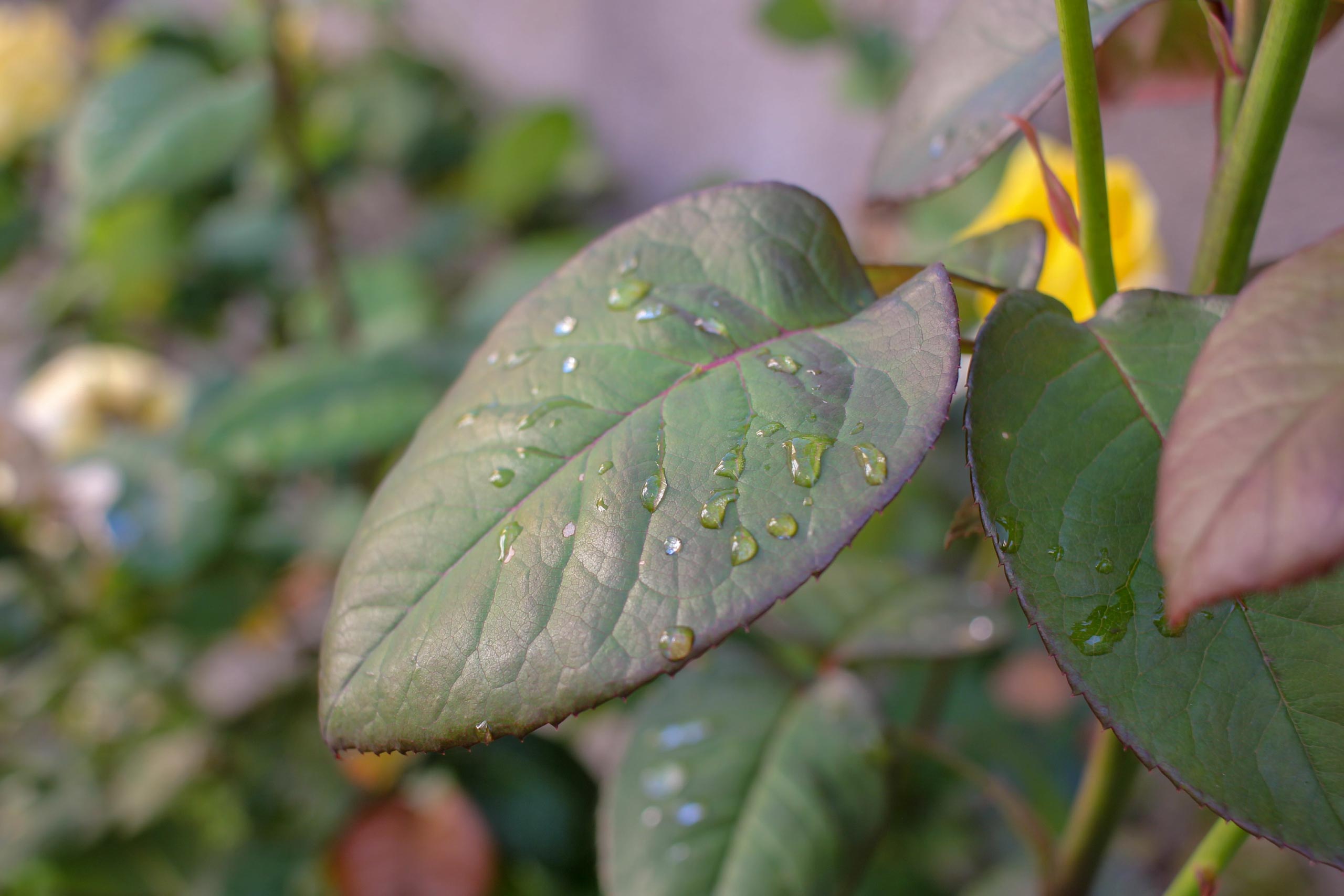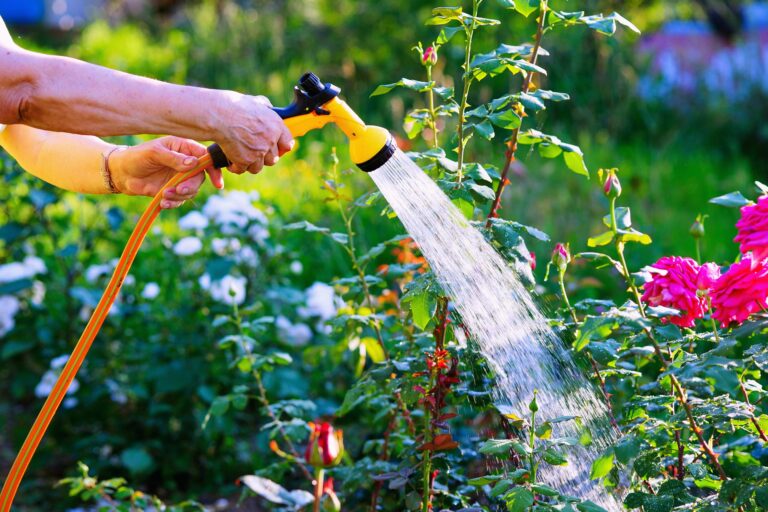Heat and Moisture Stress in Roses
Although not technically a nutrient deficiency, heat and moisture stress can produce symptoms that closely resemble those caused by imbalances in essential nutrients. For that reason, it’s helpful to understand and recognize these environmental stressors.

Symptoms vary depending on the intensity and duration of stress. One common issue arises when soils dry out, causing salts to accumulate near the root zone. This salt buildup can damage roots, leading to wilted stems and leaf scorch. In some cases, leaf margin scorch may appear on tender, developing leaves—particularly those exposed to direct sun during intense heat.
Heat stress often becomes apparent after a stretch of cloudy, rainy weather, which encourages soft, succulent new growth. If this is followed by a period of hot, dry, and sunny weather, the plant may struggle to adapt. Poor soil drainage and excessive moisture can also reduce oxygen availability to the roots, further weakening the plant and causing wilting in young shoots when temperatures spike.
One unique manifestation of temperature stress is bull-nosed blooms—distorted or flattened rose flowers that fail to open properly. This phenomenon is more common in red varieties, likely due to darker pigments absorbing and re-radiating more heat, leading to significant temperature fluctuations within the developing bud.
Another symptom is petal edge burn, which also tends to be more noticeable in red or dark-colored blooms. This damage typically appears after a cloudy spell followed by bright, hot sun, when the petals are suddenly exposed to intense light and heat.
When temperatures are high, relative humidity is low, and wind is moving across the leaf surface, the plant’s demand for water is at its peak. Under these conditions, consistent soil moisture is essential to reduce plant stress. During the hottest part of the day, brief overhead watering can help by lowering ambient air temperatures and providing immediate relief to the plant. However, this should be done carefully to avoid prolonged wet foliage, which may invite disease.
Understanding how roses respond to environmental stressors like heat and drought is key to preventing long-term damage. With a combination of consistent watering, proper soil drainage, and smart garden design to reduce heat exposure, gardeners can help their roses weather even the most intense summer conditions. Observing the early signs of stress and adjusting care practices accordingly will keep your roses resilient, healthy, and blooming beautifully through the season.
Suggested Reading and Resources
- American Rose Society – Growing Roses 101
- University of California ANR – Rose Cultural Practices
- Utah State University Extension – Garden Watering Guide
- Texas A&M AgriLife Extension – Heat Stress in Plants
- Colorado State University Extension – Managing Heat and Drought Stress
- The American Horticultural Society – Water-Wise Gardening Tips


